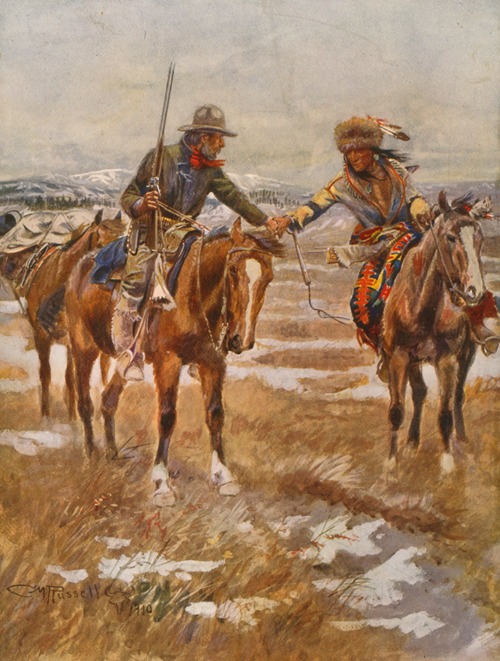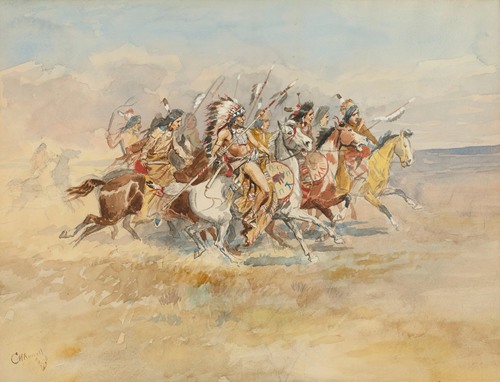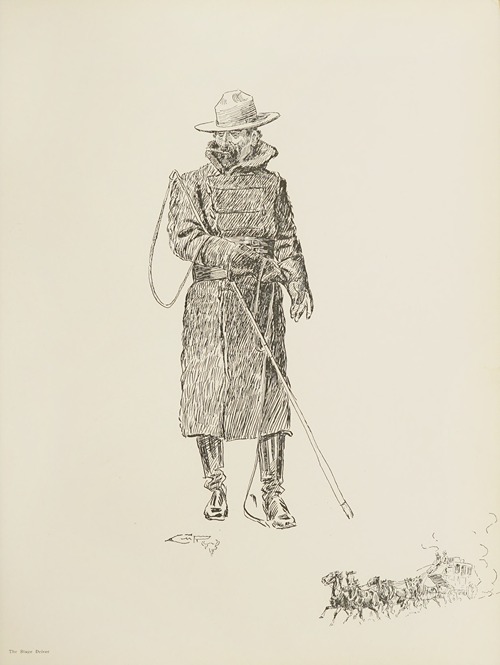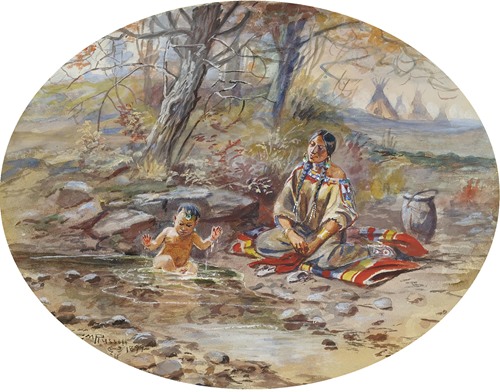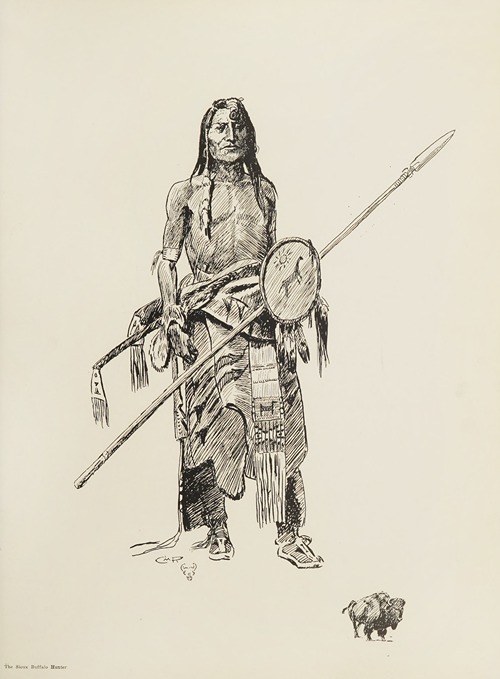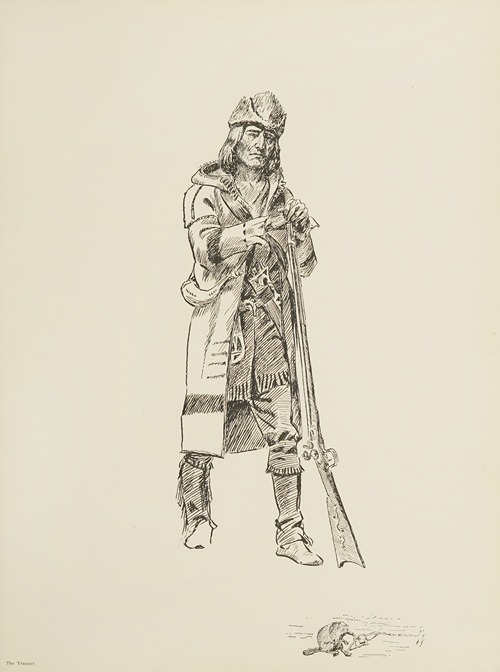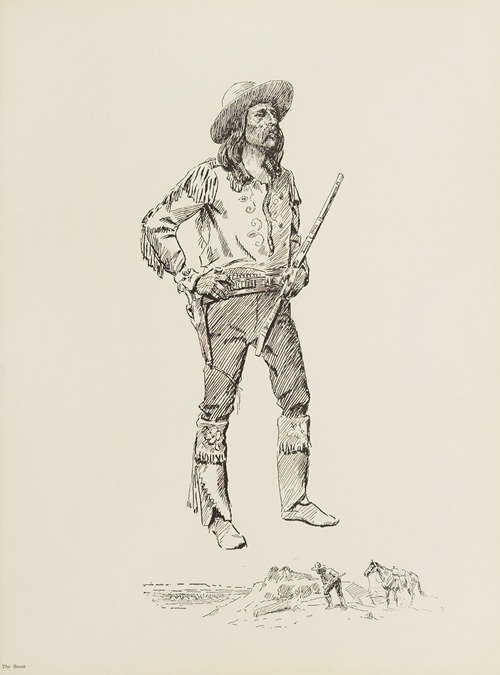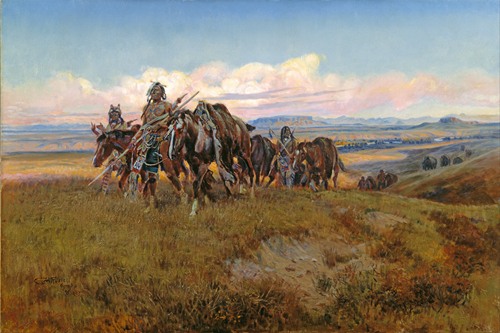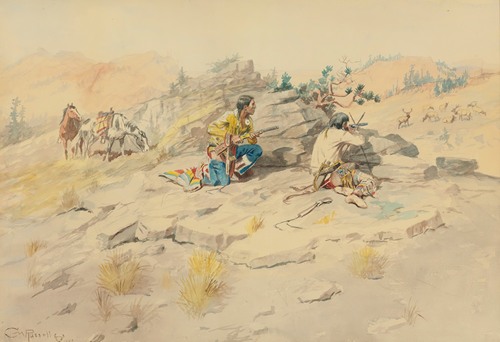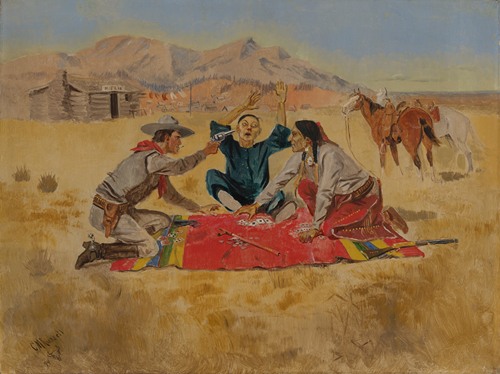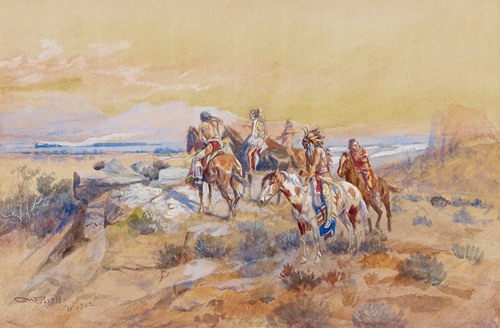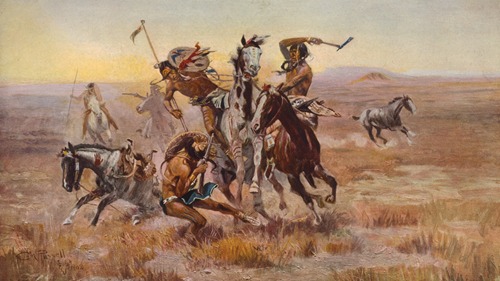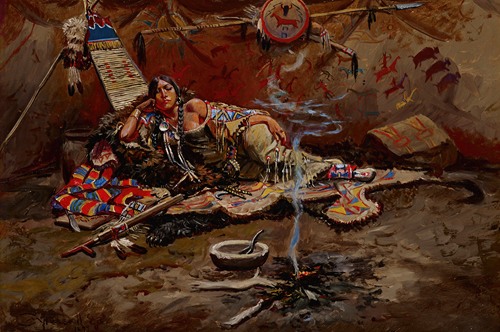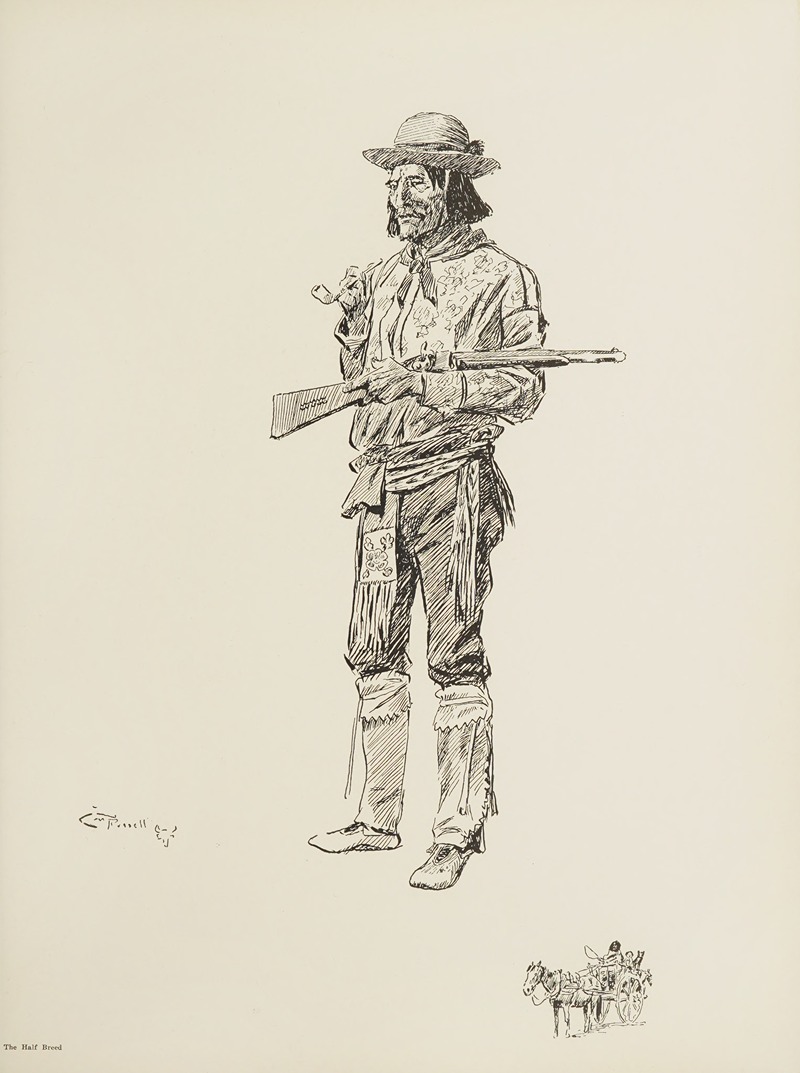

Charles Marion Russell, also known as C. M. Russell, Charlie Russell, and "Kid" Russell, was an American artist of the American Old West. He created more than 2,000 paintings of cowboys, Native Americans, and landscapes set in the western United States and in Alberta, Canada, in addition to bronze sculptures. He is known as "the cowboy artist" and was also a storyteller and author. He became an advocate for Native Americans in the west, supporting the bid by landless Chippewa to have a reservation established for them in Montana. In 1916, Congress passed legislation to create the Rocky Boy Reservation.
Art was always a part of Russell's life. Growing up in Missouri, he drew sketches and made clay figures of animals. Russell had an intense interest in the "wild west" and would spend hours reading about it. Russell would watch explorers and fur traders who frequently came through Missouri. He learned to ride horses at Hazel Dell Farm near Jerseyville, Illinois, on a famous Civil War horse named Great Britain. Russell's instructor was Col. William H. Fulkerson, who had married into the Russell family. At the age of sixteen, Russell left school and went to Montana to work on a sheep ranch.
Russell left the sheep ranch and found work with Jake Hoover, a hunter and trapper who had become a rancher. He owned land in the Judith Basin. Russell learned much about the ways of the West from him, and the two men remained lifelong friends. After a brief visit in 1882 to his family in Missouri, Russell returned to Montana, and lived and worked there for the remainder of his life.
He worked as a cowboy for a number of outfits, and documented the harsh winter of 1886–1887 in a number of watercolors. Russell was working on the O-H Ranch in the Judith Basin of Central Montana at the time. The ranch foreman received a letter from the owner, asking how the cattle herd had weathered the winter. In reply, the foreman sent a postcard-sized watercolor that Russell had painted of a gaunt steer being watched by wolves under a gray winter sky. The ranch owner showed the postcard to friends and business acquaintances, and eventually displayed it in a shop window in Helena, Montana. After this, the artist began to receive commissions for new work. Russell's caption on the sketch, Waiting for a Chinook, became the title of the watercolor. Russell later painted a more detailed version of the scene which became one of his best-known works.
Beginning in 1888, Russell spent a period living with the Blood Indians, a branch of the Blackfeet nation. Scholars believe that he gained much of his intimate knowledge of Native American culture during this period. When he returned to the Judith Basin in 1889, he found it filling with settlers. He worked in more open places for a couple of years before settling in the area of Great Falls, Montana, in 1892. There he worked to make a living as a full-time artist.
In 1896, Russell married his wife Nancy. He was 32 and she was 18. In 1897, they moved from the small community of Cascade, Montana to the bustling county seat of Great Falls. Russell spent the majority of the remainder of his life there. He continued with his art, becoming a local celebrity and gaining the acclaim of critics worldwide. As Russell was not skilled in marketing his work, Nancy is generally given credit for making him an internationally known artist. She set up many shows for Russell throughout the United States and in London, creating many followers of Russell.
In 1912 he joined cowboy artist Frank Tenney Johnson on a sketching expedition to the Blackfoot Reservation east of Glacier National Park in Montana.
In 1913, Russell painted Wild Horse Hunters, which depicts riders capturing wild horses, each band of which is dominated by a stallion. He used as much color as an artist could on his mountain landscapes. As an artist, Russell emerged at a time when the Wild West was of intense interest to people who lived in cities, and cattle drives were still being conducted over long distances. He painted images of the Old West that were later adopted by Westerns, which became a movie staple.
Russell was fond of these popular art forms and made many friends among the well-off collectors of his works, including actors and film makers such as William S. Hart, Harry Carey, Will Rogers, and Douglas Fairbanks. Russell also kept up with fellow artists of the West, including painter Edgar Samuel Paxson, painter Edward "Ed" Borein and Will Crawford the illustrator.
On the day of Russell's funeral in 1926, the children in Great Falls were released from school so they could watch the funeral procession. Russell's coffin was displayed in a glass-sided coach, pulled by four black horses.
Russell produced about 4000 works of art, including oil and watercolor paintings, drawings and sculptures in wax, clay, plaster and other materials, some of which were also cast in bronze.
